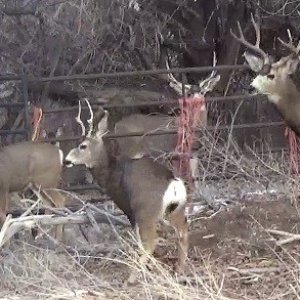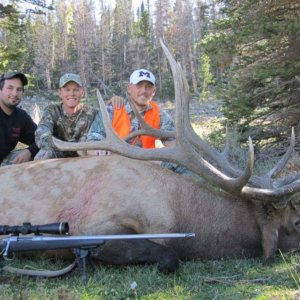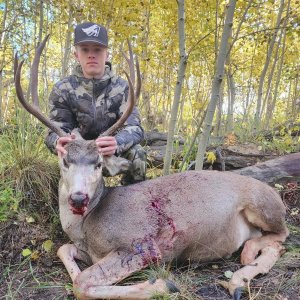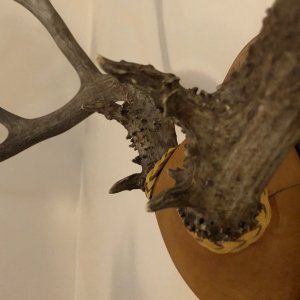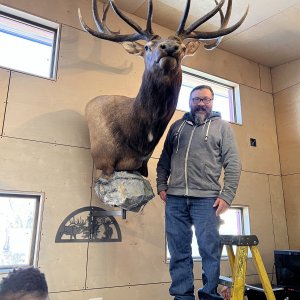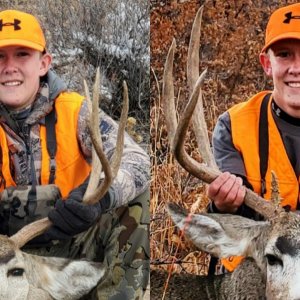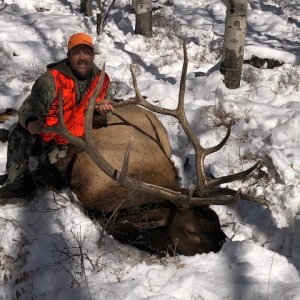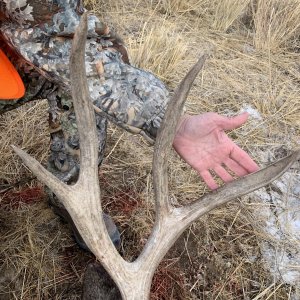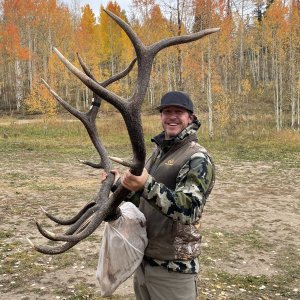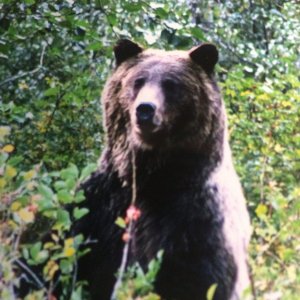M
manny15
Guest
BILLINGS, Mont. - The presence of wolves in and around Yellowstone National Park has led to changes in elk breeding patterns, likely a significant factor in the decline in elk populations, a study published Friday concludes.
The study, published in the journal Science, examined behaviors of elk herds in areas where wolves were present and in areas where the predators were not. In addition to depredation by wolves, those herds regularly targeted by packs produced fewer pregnancies and calves, the study found.
"Most people assume that low numbers of calves were due to direct predation. The paper says in large part it's because of the effect on pregnancy rates," said Scott Creel, ecology professor at Montana State University, who led the study.
The reintroduction of wolves to the Yellowstone ecosystem more than a decade ago has led to numerous studies of the effects of the predators on everything from moose and beavers to willow trees and other plants.
Some wolf critics have blamed the predators for killing large numbers of elk in the Yellowstone ecosystem.
Much research has been done on the complex predator-prey relationship of wolves and elk. But until now, no one had looked at how wolves might affect pregnancy rates.
For their study, Creel and others examined elk scat from five wintering elk herds from 2002 to 2006. The herds were from Gallatin Canyon, Dome Mountain, Blacktail Plateau and Wall Creek in the Yellowstone ecosystem and Garnet Mountain, about 120 miles to the northwest.
In particular, researchers were looking for progesterone, a hormone that increases during pregnancy.
When wolves are present, elk tend to move around more, eat in different places and change how they cluster in groups. With those elk, researchers found lower rates of progesterone and, as expected, fewer calves born the following year, the study said.
"Elk in the absence of wolves go about their business in one way, they go about the task of feeding themselves, then you put wolves on the landscape and now they have two priorities to trade off one another," Creel said. "They have a behavioral response to wolves. They carry costs."
The ratio of calves to cows, which is considered an important gauge of an elk herd's overall health, was lower in areas where wolves were busier, the study found.
In the Gallatin Canyon herd, there were just eight calves per 100 cows, the study said.
Generally, 30 calves per 100 cows is considered a solid ratio to sustain a herd.
The results appear to mesh with an earlier study that looked at how elk calves died on Yellowstone's Northern Range.
The project was launched in 2003, after a drop in the number of elk counted during annual surveys in that area. Between 1994 and 2004, the elk count fell from 19,035 to 8,335. This winter's count, conducted on Dec. 30, found 6,738 elk.
The calf study found that bears, not wolves, were the leading cause of death for young elk before their first winter, when they would be counted by researchers.
Creel said results of the latest study could help wildlife managers better understand and predict elk population by using elk-to-wolf ratios and using progesterone levels to estimate how many calves there will be the following year.
The study, published in the journal Science, examined behaviors of elk herds in areas where wolves were present and in areas where the predators were not. In addition to depredation by wolves, those herds regularly targeted by packs produced fewer pregnancies and calves, the study found.
"Most people assume that low numbers of calves were due to direct predation. The paper says in large part it's because of the effect on pregnancy rates," said Scott Creel, ecology professor at Montana State University, who led the study.
The reintroduction of wolves to the Yellowstone ecosystem more than a decade ago has led to numerous studies of the effects of the predators on everything from moose and beavers to willow trees and other plants.
Some wolf critics have blamed the predators for killing large numbers of elk in the Yellowstone ecosystem.
Much research has been done on the complex predator-prey relationship of wolves and elk. But until now, no one had looked at how wolves might affect pregnancy rates.
For their study, Creel and others examined elk scat from five wintering elk herds from 2002 to 2006. The herds were from Gallatin Canyon, Dome Mountain, Blacktail Plateau and Wall Creek in the Yellowstone ecosystem and Garnet Mountain, about 120 miles to the northwest.
In particular, researchers were looking for progesterone, a hormone that increases during pregnancy.
When wolves are present, elk tend to move around more, eat in different places and change how they cluster in groups. With those elk, researchers found lower rates of progesterone and, as expected, fewer calves born the following year, the study said.
"Elk in the absence of wolves go about their business in one way, they go about the task of feeding themselves, then you put wolves on the landscape and now they have two priorities to trade off one another," Creel said. "They have a behavioral response to wolves. They carry costs."
The ratio of calves to cows, which is considered an important gauge of an elk herd's overall health, was lower in areas where wolves were busier, the study found.
In the Gallatin Canyon herd, there were just eight calves per 100 cows, the study said.
Generally, 30 calves per 100 cows is considered a solid ratio to sustain a herd.
The results appear to mesh with an earlier study that looked at how elk calves died on Yellowstone's Northern Range.
The project was launched in 2003, after a drop in the number of elk counted during annual surveys in that area. Between 1994 and 2004, the elk count fell from 19,035 to 8,335. This winter's count, conducted on Dec. 30, found 6,738 elk.
The calf study found that bears, not wolves, were the leading cause of death for young elk before their first winter, when they would be counted by researchers.
Creel said results of the latest study could help wildlife managers better understand and predict elk population by using elk-to-wolf ratios and using progesterone levels to estimate how many calves there will be the following year.


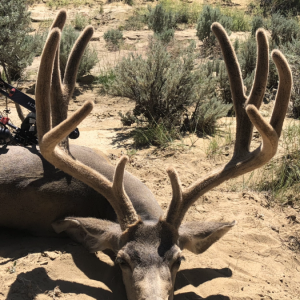
![20211028_172035[1].jpg](/xf/data/xfmg/thumbnail/20/20276-f859cf846a716c4d8229b46255512bf9.jpg?1639069947)
